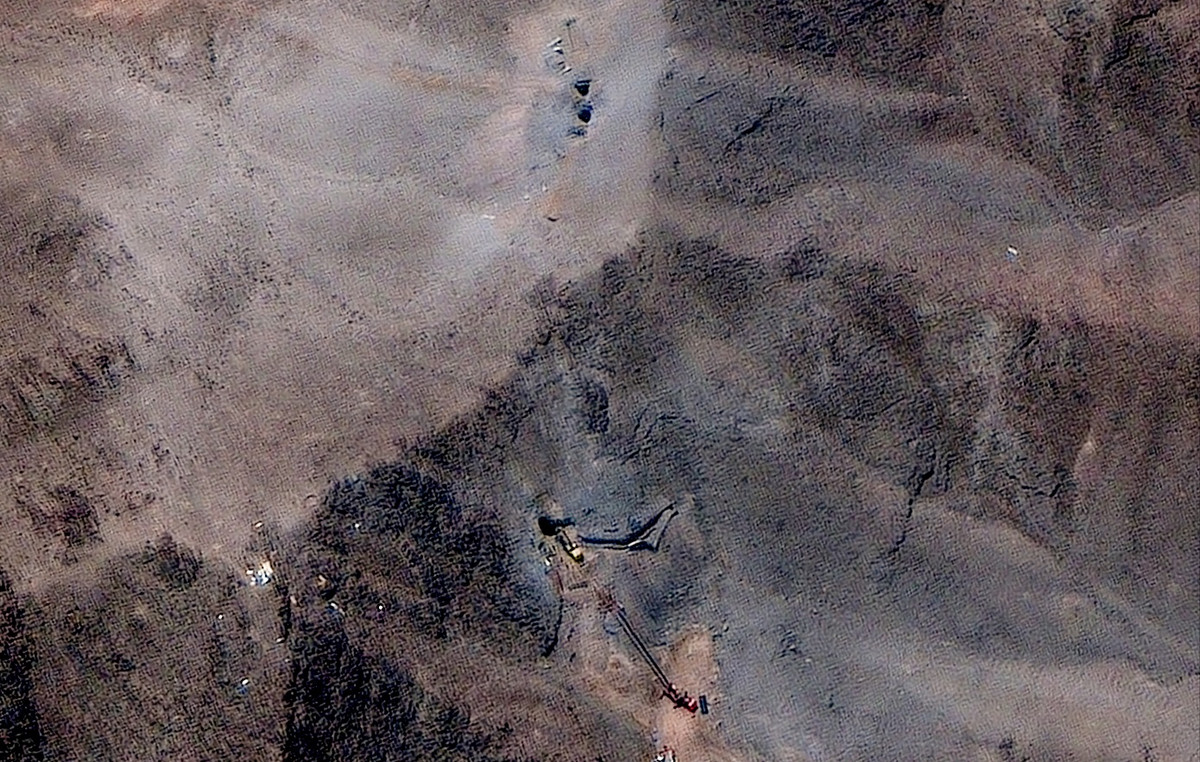In 2020, the North Korea made four missile tests. In 2021, that number doubled. In 2022, the isolated nation fired more missiles than any other year on record. It even fired 23 missiles in a single day.
In total, North Korea has launched more than 90 cruise and ballistic missiles in 2022 (so far), displaying an array of weapons that experts say point to a potential nuclear test on the horizon.
While the tests themselves are not new, their frequency marks a significant escalation that has put the Pacific region on high alert.
“The big issue in 2022 is that the word ‘test’ is no longer appropriate to describe the majority of North Korean missile launches,” said Ankit Panda, a nuclear policy expert at the Carnegie Endowment for International Peace. “Everything we’ve seen this year suggests that Kim Jong Un is very serious about using nuclear capabilities early in a conflict if necessary.”
The attention-grabbing tests also threaten to start an arms race in Asia, with countries close to increasing military capabilities, even as the United States pledges to defend South Korea and Japan for the “full range of options, including to nuclear”.
Review how the year of arms and alerts in the region went and what could come next.
More missile tests
Of more than 270 missile launches and nuclear tests conducted by North Korea since 1984, more than a quarter have taken place this year, according to data from the Missile Defense Project of the Center for Strategic and International Studies.
Of that total, more than three-quarters were registered after Kim Jong Un came to power in 2011, which reflects the dictator’s ambitions – which he has never made a secret of. In April, for example, he pledged to develop the country’s nuclear forces at the “highest possible” speed.
The target can be seen in the testing wave. North Korea has fired missiles in 36 days this year, according to a count by the CNN .
“For missiles, they set daily, monthly and annual records,” explained Bruce Klingner, a senior fellow at the Center for Asian Studies at the Heritage Foundation.
Most of these tests were ballistic and cruise missiles. Cruise missiles remain within the earth’s atmosphere and are maneuverable with control surfaces, like an airplane. Ballistic missiles glide through space before re-entering the atmosphere.
North Korea has also fired surface-to-air missiles and hypersonic missiles.
“North Korea is developing into a prominent operator of large-scale missile forces,” opined Ankit Panda. The researcher recalled recent cases in which North Korea launched missiles in response to military exercises or diplomatic negotiations held by the US and its regional allies, adding: “Whatever the US and South Korea do, North Korea tries to demonstrate that he can also do it”.
Among the ballistic missiles tested this year was the Hwasong-12, which traveled more than 4,500 kilometers in October – flying over Japan, something North Korea has accomplished for the first time in five years. Another notable missile was the Hwasong-14, with an estimated range of over 10,000 kilometers.
To put these distances in context, the island of Guam, which belongs to the US, is just 3,400 kilometers from North Korea.
But one weapon in particular caught international attention: the Hwasong-17, North Korea’s most powerful intercontinental ballistic missile (ICBM) made to date. It could theoretically reach the mainland US – although there are still questions about the missile’s ability to deliver a nuclear payload on target.
North Korea claimed to have successfully launched the Hwasong-17 in March for the first time. However, experts from South Korea and the US believe the test may in fact have been an older, less advanced missile.
The Hwasong-17 was tested again in November, according to North Korean state media. Kim later warned that the country would take “more offensive” action in response to “enemies who seek to destroy peace and stability on the Korean Peninsula and region”.
nuclear scare
Since the beginning of this year, US and international observers have been warning that North Korea appears to be preparing for an underground nuclear test – which would be its first since 2017.
Satellite images showed new activity at North Korea’s nuclear test site, where the country has already conducted six underground nuclear tests. Apparently, the most recent test was with a hydrogen bomb, the most powerful weapon North Korea has ever tested.
The 2017 nuclear test had an estimated yield of 160 kilotons, of considerable destructive potential. By comparison, the US atomic bombings of Hiroshima and Nagasaki, Japan yielded only 15 and 21 kilotons, respectively. The most explosive tests in history, yielding over 10,000 kilotons, were carried out by the US and Russia.
It is unclear exactly how many nuclear weapons North Korea has. Experts from the Federation of American Scientists estimate that the country has between 20 and 30 nuclear warheads – but their ability to accurately detonate them on the battlefield is unproven.
rising tensions
While there was some hope of a diplomatic breakthrough in 2019, with landmark meetings between Kim and then US President Donald Trump, the possibility of understanding dissipated when both leaders stepped aside without having reached any formal denuclearization agreements.
Relations between the US and North Korea have not evolved since then. In 2021, Kim even announced a comprehensive five-year plan to modernize the country’s military, including the development of hypersonic weapons and a nuclear submarine.
The year 2022 has only reinforced that warlike vision, with North Korea working to develop its own strategic nuclear deterrence strategy, as well as nuclear options in any conflict on the Korean Peninsula.
Experts speculate on why North Korea has made so many shows of force in 2022. Some say Kim may have felt empowered to act while the West was preoccupied with the war in Ukraine. Ankit Panda, the nuclear expert, added that tensions may have been heightened by the conservative government that took over South Korea in May.
North Korea’s aggressive ramp-up of weapons testing has raised alarm in the region, pushing its exposed neighbors (Japan and South Korea) closer to Western partners.
The US, South Korea and Japan held several joint exercises and fired their own missiles in response to North Korean tests. The US has stepped up its presence in the region, redeploying an aircraft carrier in waters near the peninsula, and sending state-of-the-art stealth fighter jets for training in South Korea. Meanwhile, the Quad countries – the group that unites the US, India, Japan and Australia – have deepened military cooperation and their leaders met in May.
Individual governments have also taken dramatic steps, with Japan saying it will double its defense spending, thus achieving the pacifist nation’s biggest military investment since World War II.
But experts warned that these militarization efforts could further fuel instability across the region. And there is no clear end in sight. The US and South Korea have more joint exercises planned in the first half of 2023, which could spur North Korea to continue test firing “just to show its displeasure”, according to Klingner.
The expert added that talks are unlikely until Kim has developed his weapons, to return to the table in a position of strength.
“They have improved their capabilities, both nuclear and missile, in each of the lanes on that road,” he compared. “It’s all very, very worrying.”
Source: CNN Brasil
Bruce Belcher is a seasoned author with over 5 years of experience in world news. He writes for online news websites and provides in-depth analysis on the world stock market. Bruce is known for his insightful perspectives and commitment to keeping the public informed.







